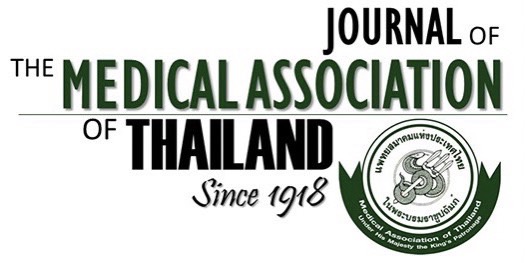Effect of Changes in Diagnosis and Management of Active Infective Endocarditis on the Clinical Outcome at Srinagarind Hospital
Orathai Pachirat, MD*, Songsak Kiatchoosakun, MD* Ploenchan Chetchotisakd, MD*, Cherdchai Tantisirin, MD**, Supon Limwattananon, MPHM, PhD***, Julaporn Limwattananon, MPHM, PhD***
Affiliation : * Department of Medicine, Khon Kaen University, Khon Kaen ** Department of Surgery, Faculty of Medicine, Khon Kaen University, Khon Kaen *** Department of Community Pharmacy, Faculty of Pharmaceuticle Sciences, Khon Kaen University, Khon Kaen
Background : In recent years, diagnostic methods and treatment of infective endocarditis (IE) have been
improved. It is not known whether the clinical outcome is any better.
Objective : To assess the effect of changes on the clinical outcomes of IE patients
Materials and Methods : The authors performed a retrospective study comparing IE patients hospitalized at
Srinagarind hospital during the period from 1/1/1990 to 31/12/2002. The authors classified the patients
according to the period of diagnosed from 1990 to 1993 (n = 57), 1994 to1997 (n = 71), and 1998 to 2002
(n = 72) cohorts.
Results : There were two hundred IE patients in the present study. Mean age and degenerative heart disease
were increasing. Operative and in-hospital mortality were decreasing. Overall survival rate was 81% at the
first year, 60% at 5 years, 55% at 12 years in surgically treated patients, with 30-day mortality in 27.1%
mostly from the 1990 to1993 cohort. In medically treated IE, overall the survival rate was 37% in the first
year, 32% at 5 years, 20% at 12 years, with 30-day mortality in 72.86% mostly in the 1990 to1993 cohort.
Early surgical intervention, improved long-term survival rates (hazard ratio 0.23; 95%CI 0.14-0.37), severe
congestive heart failure (hazard ratio 1.87; 95%CI 1.17-2.99) and renal failure (hazard ratio 4.10; 95%CI
2.05-7.84) are the predictors of mortality by multivariate analysis. Survival rate from 1998 to 2002 cohort
was 85%, 1994 to 1997 cohort was 54% and 1993 to 1990 cohort was 27% at 1-year (p < 0.001).
Conclusion : The data indicated that the changing clinical outcome of this disease, reflected improvements in
diagnostic method and treatment. Although IE remains a serious condition characterized by significant
morbidity and mortality, the overall survival rate has significantly improved over time. The authors there-
fore, believe that early diagnosis and prompt treatment both medical or surgical interventions will improve
the outcome of IE patients.
Keywords : Infective endocarditis, Survival and outcome



